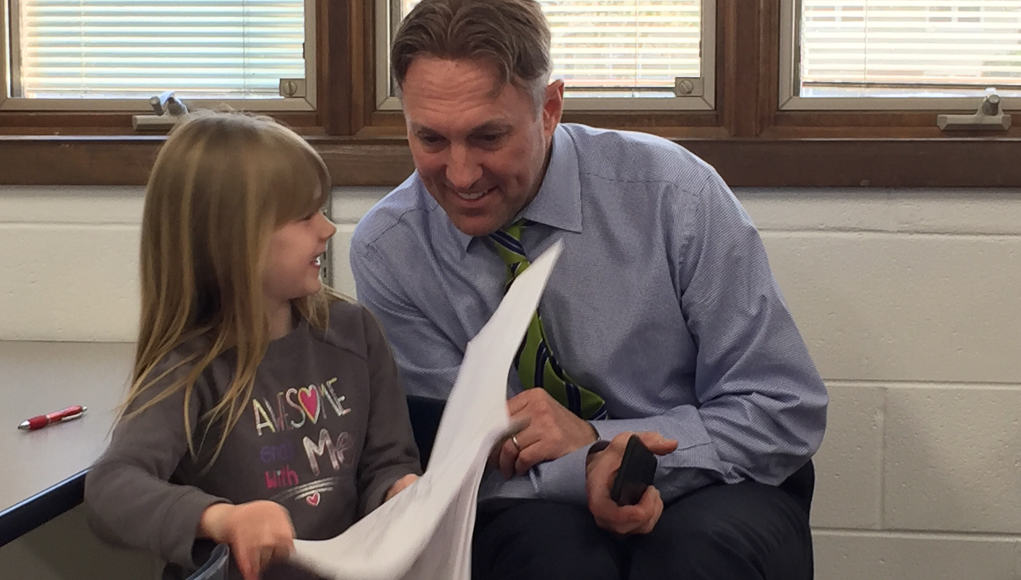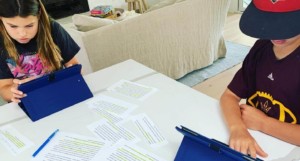3 Ways to Prepare Educators to Teach PBL

By Dr. Art Fessler
Passion is a driving force in all facets of life, especially teaching and learning. Learning in Community Consolidated School District 59 (CCSD59) in the Chicago suburbs reflects the actual work being done in the world, empowers the learner, solves real-world problems and provides for student agency.
To make sure our students are future-ready, lessons now require an emphasis on critical thinking, collaborative problem-solving, creativity, innovation, data analysis and the active use of many higher-level cognitive skills. As we move from a traditional means of education to an environment where kids are empowered to learn, it is our challenge, privilege and responsibility to ensure that every student in every school leaves CCSD59 with these skills and competencies that prepare students to be successful in life.
Project-based learning (PBL) is a trend that’s spreading faster than a wildfire during a drought. Why? Because research on PBL proves that it increases student engagement and achievement, and helps students develop the 21st-century skills they need to succeed in their future careers.
For PBL to reach its full potential, teachers must learn to step back and be facilitators in the classroom. This is a change that requires thoughtful and ongoing professional development. Here are three ways to deliver that support.
1. Empower Your School Leaders
As leadership expert Simon Sinek says, “There are leaders and there are those who lead.” Those who lead inspire staff to follow; they build capacity; they advance an organization. As a leadership team, we spend a significant amount of time discussing and building a shared understanding of best practices in instruction and leadership so leaders have the requisite skill to inspire educators.
When we equip our leaders with a strong understanding of instructional practice, leadership skills and clear expectations for greatness in the classroom, each of them is empowered to own the development of teachers, coaches and staff in their respective schools. Both building and district leaders are required to spend a portion of their day in the classroom and grade-level meetings to gain an understanding of the challenges staff face. Asking good questions, collecting data and providing meaningful feedback all play an important role in building leadership credibility and empowerment.
2. Shift to Skill-Based Outcomes
A significant shift in our transition of instructional practice to modern learning was moving from traditional instruction and assessments to performance tasks that allow students to demonstrate their learning through the application of skill, knowledge and content. PBL inherently offers students choice and agency to explore multiple learning pathways for problems and problem-solving.
Giving students choices naturally increases their interest and engagement. We have created a culture where we are preparing students to be successful in life in the context of real-world issues. PBL supports our district’s mission to align skill-based outcomes to support common core and application of learning. For this initiative to be successful and for teachers to act as facilitators in the classroom, a district must provide the proper tools and training.
3. Provide Proper PD Resources
Professional development is a top priority for District 59. Starting in 2012, we provided our staff with job-embedded professional development through seven literacy coaches who support teachers in planning and conducting powerful literacy instruction and assessment. Educators engage in weekly professional learning time designed to provide and facilitate professional learning and planning opportunities that lead to improved student growth in both the academic and social-emotional domains.
We also use multiple professional guidance materials and resources including the Buck Institute and Defined STEM to assist educators in PBL lesson planning. While Buck Institute has helped us kick-start our PBL program by providing educational blogs and actual units, Defined STEM’s project-based learning resources have saved us valuable time spent on curriculum planning.
Every resource we provide allows teachers the flexibility to modify and really personalize lessons to meet the needs of their students and provide some level of choice in learning. The bottom line is that we attempt to provide educators the tools and the autonomy to make the learning applicable and engaging and to prepare our students to be successful in life.
If our educators can inspire students to be passionate about learning, the possibilities for developing self-directed learners for the 21st-century are limitless. PBL is a time-tested and effective approach that has helped students at District 59 to transform their learning experience. They are provided a venue to transfer their knowledge, passions and results of risk into a tangible product to be shared with classmates and others beyond their school-based sphere of influence.
For more, see:
- What Makes High Quality PBL?
- PBL World Educators Focus on Process
- The Role of the Teacher in High Quality PBL
Art Fessler is the Superintendent at Community Consolidated School District 59 in the Chicago suburbs. Follow him on Twitter: @afess7
Stay in-the-know with all things EdTech and innovations in learning by signing up to receive the weekly Smart Update.







0 Comments
Leave a Comment
Your email address will not be published. All fields are required.